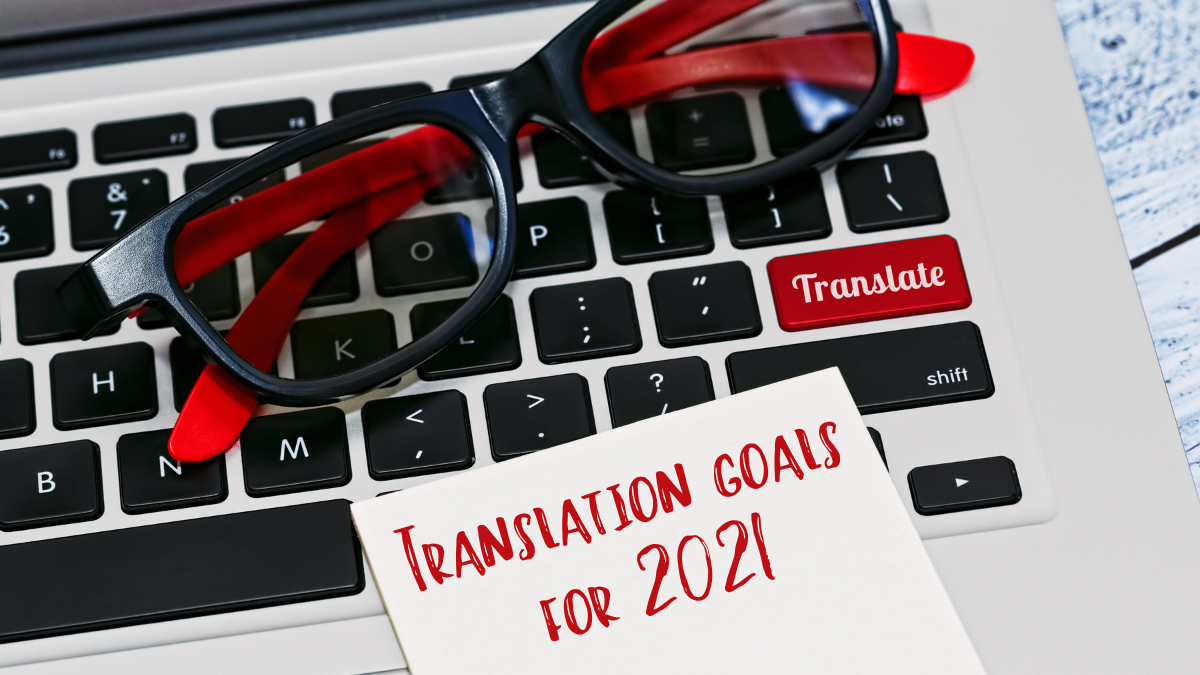
Content translation goals for 2021
18 January 2021. The third week of January. Let’s have a look at your New Year’s resolutions:
❌ You didn’t quit smoking.
❌ You didn’t even remove the labels from the gym apparel you got for Christmas.
❌ And that pile of books on your bedside table remains the same since January 2020.
New Year’s resolutions are easier said than done and are easy to forget.
The good thing about New Year’s resolutions in translation is that they don’t have a timeframe. You just implement them when you’re ready. Planning is critical, but none said you have to start on January 2.
I already talked about them in 2019, giving you some tips about content translation for websites, e-commerce and social media.
This year, I’m sharing some tips particularly suited to companies starting to go global or that already have some experience.
First things first. Choose your target markets
Of course, the best way is to do proper market research. But if you don’t have time or budget, here’s an easy tip you can use to start with.
Have a look at your analytics: your website, your social media or your app statistics.
Did you get visits from people from other countries, but these visits didn’t result in conversions?
They probably found something they liked on your site, but their customer journey ended too fast because they didn’t have the information in their language.
These are the languages you should start with.
For testing purposes, you can use machine translation, but still I suggest you do a minimum post-editing to make sure there are no cultural blunders. You can go for a human, professional translation that will drive conversions and engagement in a later stage.
Choose the content you will translate
Again, your analytics are your best friend.
Have a look at the pages those potential customers visited, and start translating those.
Your visitors’ interactions will tell you which are the next pages you need to translate, or if you should create specific content for those countries.
Review your source content and make it translation-friendly
Now that you know the content you will translate, you can reduce time and help your translators by posting content that is easy to translate.
Here are some tips for creating translation-friendly content:
⭐ Make sure there are no spelling mistakes. Some spelling mistakes can change the meaning of a sentence entirely.
⭐ Keep it simple. Avoid long paragraphs with long sentences.
⭐ Check your punctuation. Again, a comma placed in the wrong position can mean a different thing.
⭐ Keep it neutral. Avoid strong cultural, religious or politic references that may raise the controversy on your target markets.
⭐ Are you adding visuals to your content? Apply the same tips about neutrality above mentioned to your images. And don’t forget the alternative texts! You will have to translate those as well.
Review your existing translated content
Before adding new translations, it may be wise to have a look at your existing translations and see if they fit your purpose:
⭐ Review your translations. Are they accurate? Do they express the meaning of the source text? Can they be improved?
⭐ As with your source content, make sure there are no spelling or punctuation mistakes.
⭐ Review your keywords. Are they the most appropriate ones for this content in this specific region and language?
Some global content strategies fail because they aren’t adapted correctly to the target audience’s language and culture.
Use translation technology
Translation technology doesn’t mean only machine translation.
If you need to do translations frequently, some web-based and desktop solutions can speed up translation and ensure consistency with previous translations.
Of course, it depends on your translation volume and budget.
⭐ If you only have a website or a blog, translation plugins enable you to easily create the multilingual structure for your site. You can then enter the translations directly on your site or export them to translate them offline and import them once they are completed. WPML is one of the most popular plugins for WordPress websites and blogs.
⭐ You can use computer-aided translation tools such as SDL Trados Studio or MemoQ (desktop) or XTM and Memsource (web-based) for product documentation. These tools enable you to translate faster, keep consistency and reduce time and costs in updates. They also have machine translation capabilities.
⭐ If you outsource part or all your translations, some of these tools also have a more comprehensive solution, a Translation Management System (TMS), to help you with project management tasks. Smartling is another tool you can use for this purpose.
Is going global one of your company’s New Year’s resolutions? Do you need help to materialise it? Feel free to contact me and let me know how I can help you.
See you for the next post!
